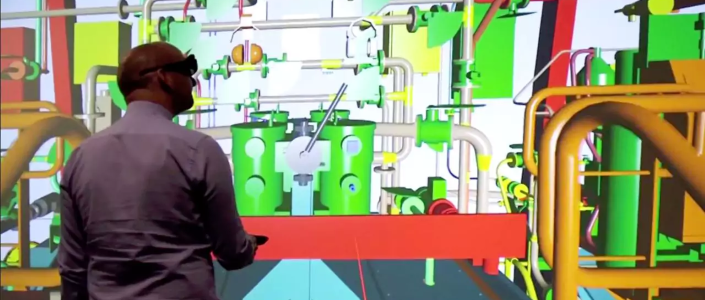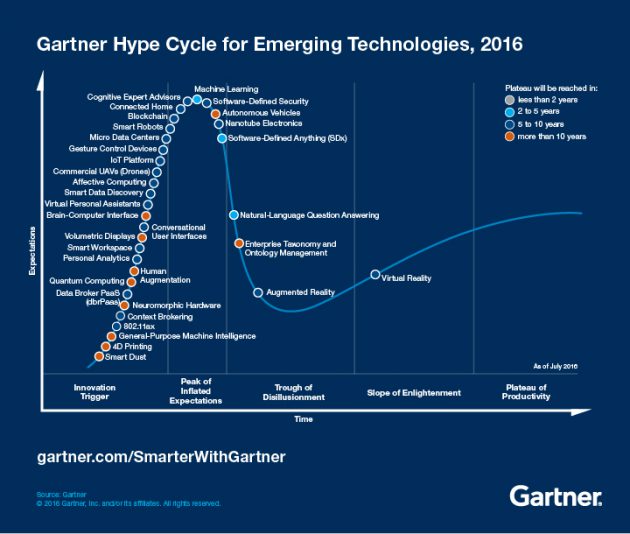
Virtual Reality (VR) is one of the technologies we are hearing more and more about these days. VR is technically not new; however, with the latest developments from several vendors such as Oculus (Facebook), Sony, Samsung and even Google we have a newfound love for the potential of VR. In the last 5-10 years we have seen a transition from Industry leading technology trends to consumer leading technologies. However, I do not think VR will follow this path. In other words, I believe industry like ours will be leading the charge in VR development and improvements.
When will VR be Common Technology?
If we look at Gartner Hype Cycle for 2016 we see that VR is already on the Slope of Enlightenment. To be honest I would have thought we would still be in the Trough of Disillusionment:). Gartner’s Hype Cycle states that we are another 5-10 years away from when we would hit the plateau.

This information aligns with my prediction and many other analysts. It also is in sync with Mr. Zuckerberg who, as Facebook’s CEO, authorized the purchase of Oculus for $2bn.
Virtual Reality (VR) technology is still around a decade away from providing consumers with a good VR experience.
-Facebook CEO Mark Zuckerberg
Consumer Market Challenges
There are many reasons that VR has been adopted slower than expected in the consumer space. Some reasons are:
- Low cost solutions are low quality, do not support complex scenes.
- High cost for head mounted displays for a consumer
Why Industry Will Lead VR
There is no doubt that VR has many benefits for any industry and several companies are starting to capitalize on today’s technology. Even in our industry we are seeing more and more companies using VR during pre-sales to better communicate the overall design. They are also using VR for design reviews and even creating training experiences to better educate and train personnel at a significantly lower cost.
So even with today’s technology there are many organizations leveraging VR to produce a better product at a lower cost.
The challenges that plague the consumer market are not as much of an issue for industry.
- Cost: The cost of the VR systems including the required powerful machine are low enough for organizations to invest in and have a high ROI.
- Expensive Machines: Many organizations already require powerful machines for engineering their product and the additional hardware requirements only increase the investment of their machines marginally.
- Tethered: When performing these actions to accomplish a specific task, users are more accepting of being tethered to a computer than if they were using this for personal reasons.
- VR Headset size: Again, in a work environment a device that may seem bulky for consumers is acceptable for business.
- Value-Add Applications: There are a limited amount of applications but they are very value-add applications for VR today as mentioned above.
- VR platforms support CAD: Each of the VR platforms support “standard” CAD output which can be generated with today’s CAD software.
- Availability of Controlled Environment: Having a dedicated room for VR is not a challenge as a meeting room could easily be repurposed for a VR room.
For these reasons and many more, VR will be ready for industry much earlier than for the consumer market. Because of this, industry will continue to push the VR technology to provide an even better VR experience. This will include improving the hardware performance and size, improving user interaction with VR and reducing the amount of time it takes to get from a CAD model to a VR model.
Closing Remarks
Virtual Reality is predicted to hit $150 billion by 2020. There is no doubt that the consumer market will play a large portion of that; however, with the challenges that face VR today, the growth in the consumer market will be slow.
Industry is not affected by the limitations of VR to the same degree as the consumer market so there will be a faster adoption by industry. This will mean that industry will be leading and driving a lot of the enhancements to VR.

